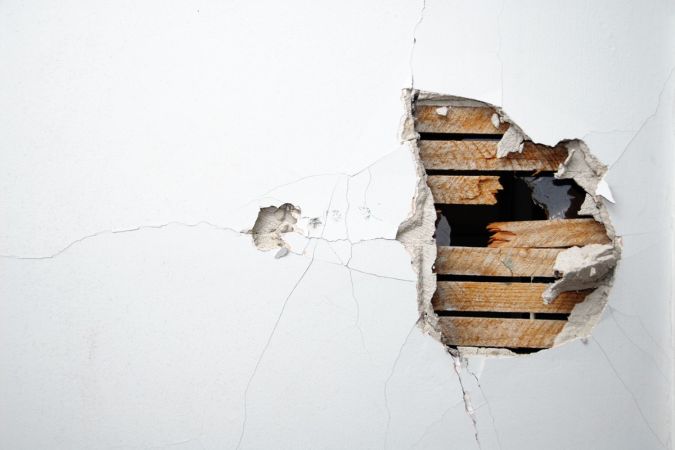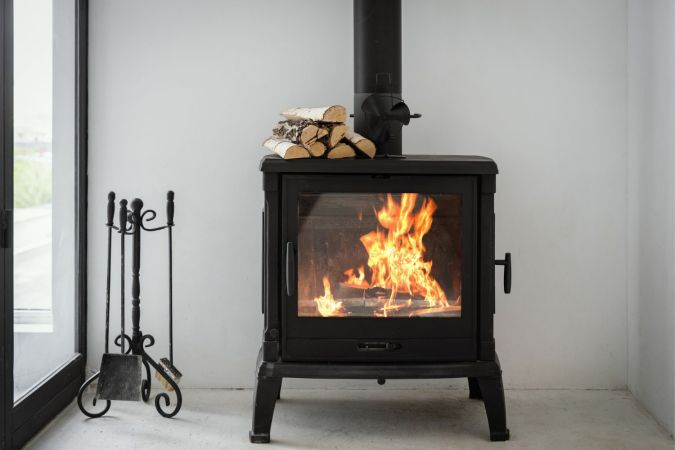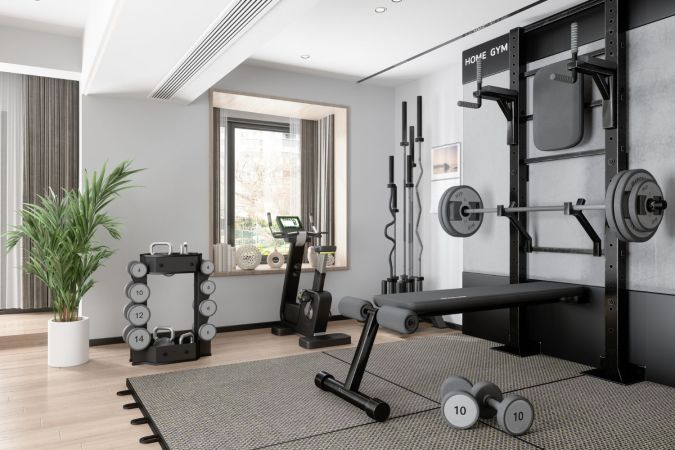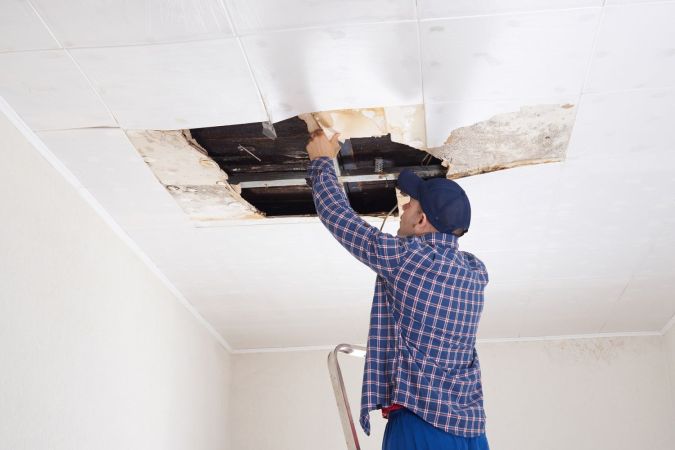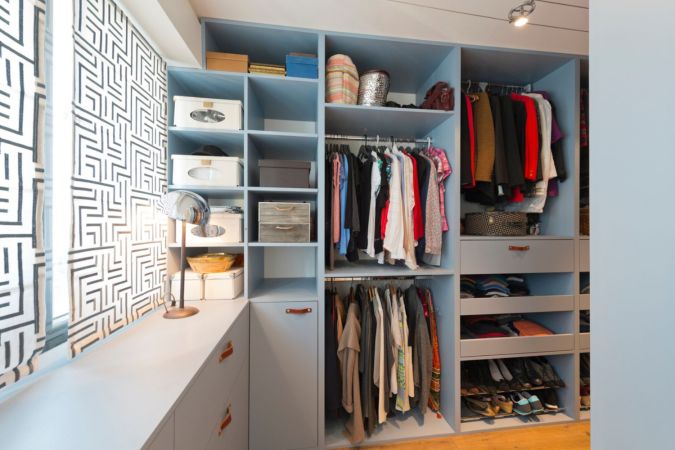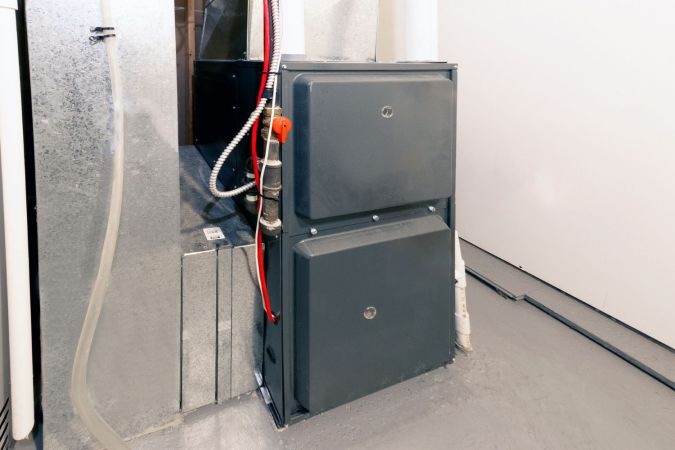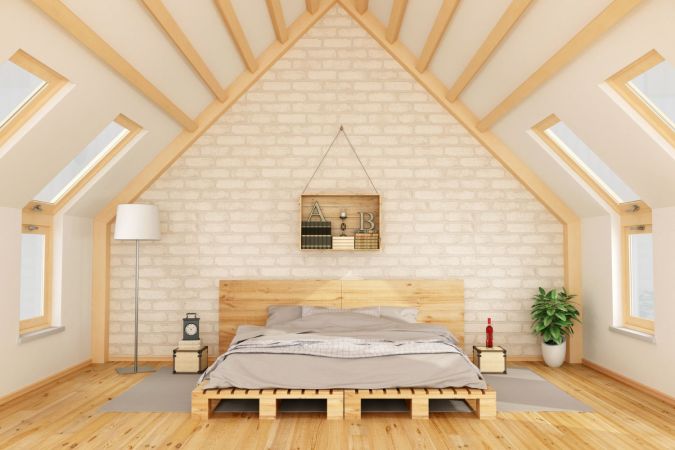We may earn revenue from the products available on this page and participate in affiliate programs. Learn More ›
Highlights
- The typical cost range to vault a ceiling is between $4,800 and $38,000, with homeowners across the country paying an average of $19,900.
- The main factors that can affect the total cost to vault a ceiling include the home’s construction type, the ceiling location and type, the preparation of the worksite, and the cost of labor.
- Vaulted ceilings have many benefits, including increased light, the illusion of more space, improved aesthetics, and a potentially increased home value.
- Vaulting a ceiling is a major home renovation project that the average homeowner will likely not have the skillset to complete on their own. A contractor can ensure that the ceiling is vaulted properly, which will avoid potentially expensive structural issues down the road.
Vaulted ceilings bring a sense of openness and elegance to the home that is difficult to achieve with a plain, flat ceiling. A homeowner may choose to invest in a half vaulted ceiling, a vaulted ceiling in a living room, or even a vaulted ceiling in a bedroom. But what is a vaulted ceiling exactly? It’s essentially a ceiling that has been extended up into the attic space between the roof and the original ceiling. A standard flat ceiling is generally 8 to 10 feet in height, while a vaulted ceiling takes advantage of empty attic space, raising ceiling height in an arched design and adding an air of grandeur to the space.
According to Angi, the cost to install a vaulted ceiling ranges from $4,800 to $38,000, though on average homeowners can expect to pay around $19,900. However, there are many factors that can affect the cost, such as the construction type, the ceiling location, and the various types of vaulted ceilings. Homeowners can use this guide to get a better idea of the factors involved in calculating the cost to vault a ceiling.
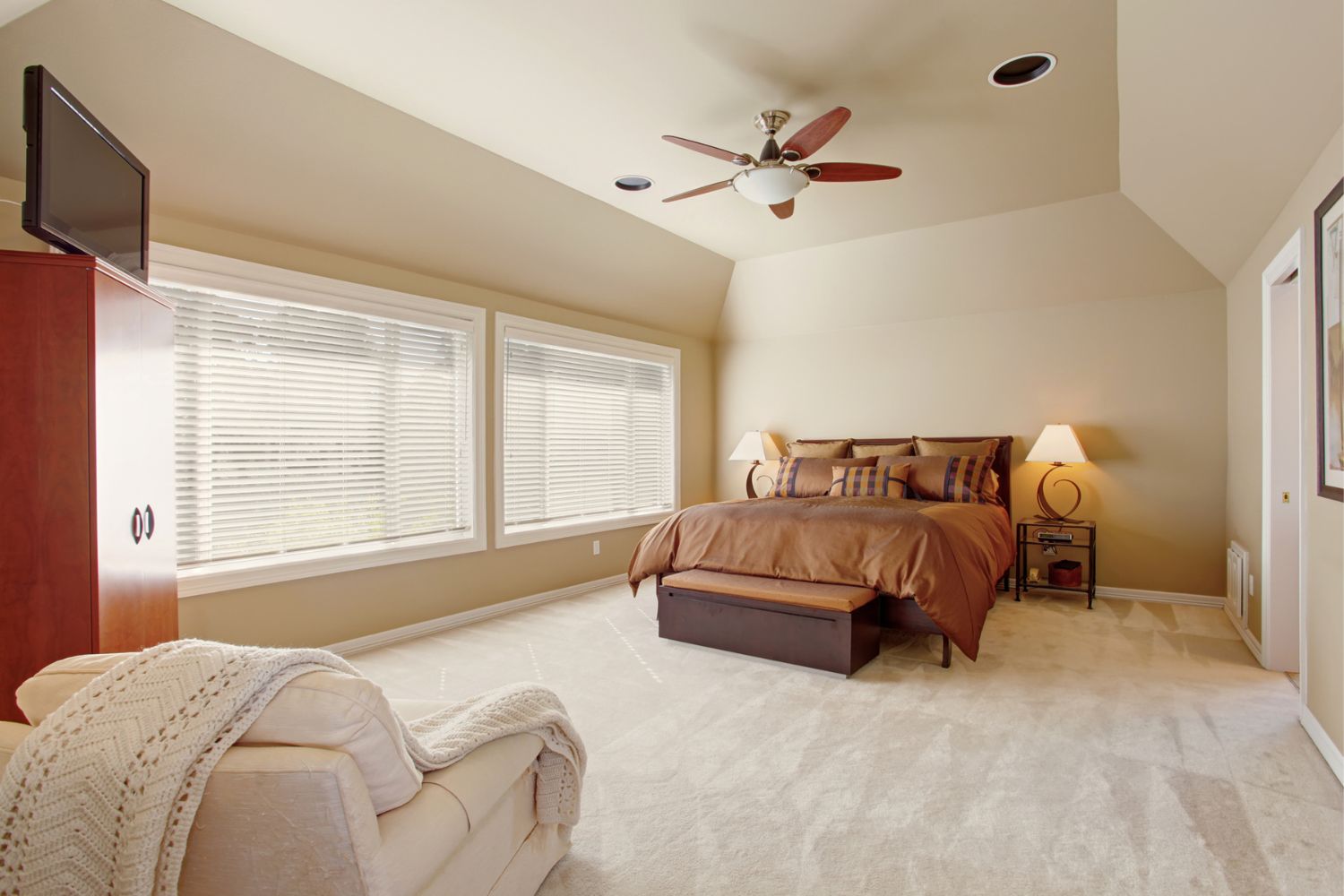
Factors in Calculating the Cost to Vault a Ceiling
In order to put together an accurate assessment of the cost to vault a ceiling, it’s important for a homeowner to consider the key project factors that could influence the cost of this upgrade. Common considerations include the construction type, ceiling location, ceiling type, and more. Homeowners can use the information below to learn the details necessary to create a budget for a vaulted roof installation.
Construction Type
The first factor for homeowners to consider is whether the vaulted ceiling will be installed in a new home during the initial construction or if it will be added to an existing home by removing the current ceiling.
- A new home is easier to work with, as the contractor will be able to plan and coordinate the installation of the electrical system, HVAC system, plumbing system, insulation in conjunction with the roofing design. The cost for a vaulted ceiling in new construction ranges from $16,000 to $21,000. Since the building does not need to be dismantled or modified prior to the installation, the cost is typically lower than the cost to install a vaulted ceiling in an existing structure.
- An existing home typically requires extensive modifications to the electrical and HVAC systems to accommodate the upgrade. Depending on the type of vaulted ceiling, the contractor may also need to modify the existing roof. Due to the additional work required for dismantlement and modifications, the cost for this project is generally higher than the cost for a vaulted ceiling in a new build. Homeowners can expect to pay about $18,000 to $35,000 for this project.
Ceiling Location
The cost of the project can also be affected by the location of the ceiling, so it’s a good idea for a homeowner to choose the right room for the renovation based on aesthetics and budgetary restrictions. Installing a bathroom vaulted ceiling can be a great way to make a compact space feel larger, though it will cost about $12,000 to $18,000.
A bedroom vaulted ceiling can turn a standard bedroom into an elegant master bedroom with a lofty ceiling for about $12,000 to $18,000. Similarly, a kitchen vaulted ceiling will cost about $12,000 to $18,000, including the cost to reroute an existing exhaust hood. Living room vaulted ceilings tend to cost a bit more, ranging from $18,000 to $25,000. This is due to the fact that living rooms typically have more square footage than the average kitchen, bedroom, or bathroom. Homeowners who are looking to vault the garage will want to be prepared to pay about $18,000 to $35,000 to complete this project. The following table breaks down the average cost to vault a ceiling by room.
| Ceiling Location | Average Cost to Vault Ceiling |
| Bathroom | $12,000 to $18,000 |
| Bedroom | $12,000 to $18,000 |
| Garage | $18,000 to $35,000 |
| Kitchen | $12,000 to $18,000 |
| Living Room | $18,000 to $25,000 |
Ceiling Type
There are several types of vaulted ceiling that homeowners can select for this project, including barrel, cathedral, dome, groin vault, and rib vault, each with benefits, drawbacks, and varying costs. However, it’s important for homeowners to note that even the least expensive option typically starts at about $4,800.
Dome, groin vault, and rib vault ceilings are the least complicated to install, which is why they cost about the same with a price ranging from $4,800 to $10,000. Barrel ceilings typically cost a little more at about $5,000 to $10,200. However, cathedral ceilings are the most expensive option, ranging from $16,000 to $35,000, due to the extensive modification necessary to complete the job. Alternative ceiling options include the following.
| Ceiling Type | Average Cost (Including Labor and Materials) |
| Coffered | $25 per square foot |
| Drop | $1,020 to $2,350 |
| Drywall | $10 to $20 per panel |
Site Preparation
Site preparation is considered a part of the labor involved with installing a vaulted ceiling, which means that any costs associated with site prep should be folded into the labor estimates for the project. However, for those looking to save on the cost of the project, it’s a good idea to move any furniture or appliances, clean the area, and prepare as much as possible so that there is less for the contractor to do.
Even after the initial preparation, there may be components of the HVAC system, plumbing system, or electrical system that need to be moved or modified. If the installation is not part of a new build, the existing ceiling will need to be removed before a new one can be installed. This work can quickly add up, ranging in cost from $1,100 to $6,200.
Labor
The majority of the cost for this project is due to the amount of labor required to install the vaulted ceiling. On average, labor accounts for up to 75 percent of the total cost of a vaulted ceiling installation job. This means that the homeowner will spend about $13,500 to $26,250 on labor alone. With this range in mind, it’s recommended that homeowners get quotes from at least three potential companies or contractors before they choose someone to complete this work.
Depending on the company or contractor, the labor rates may decrease, allowing the homeowner to save on the total cost of the project without affecting the quality of the vaulted ceiling installation. Homeowners will want to keep in mind that labor prices will typically include the cost to hire drywall experts, painters, insulation installers, electricians, structural engineers, carpenters, and HVAC technicians.
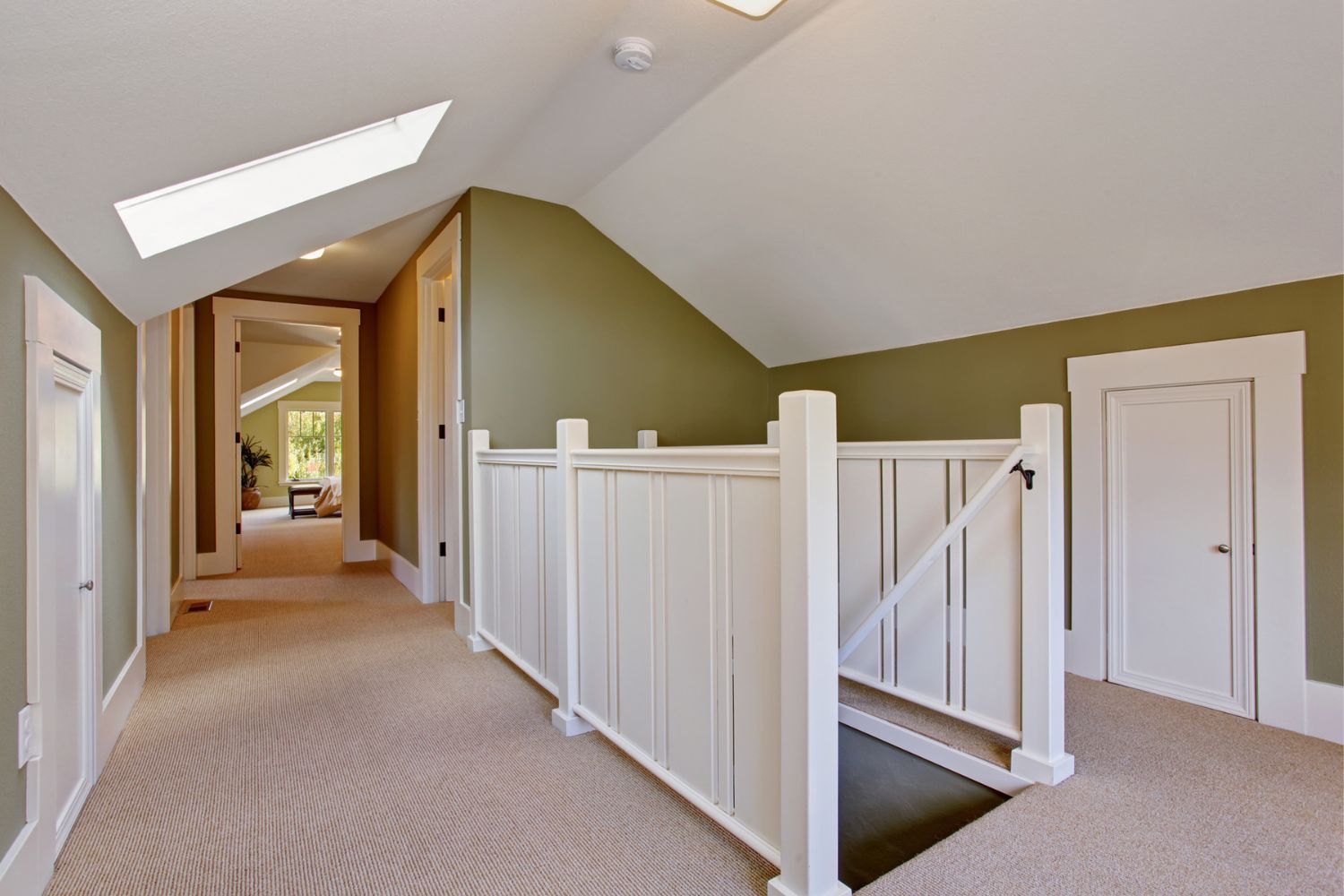
Additional Costs and Considerations
With a firm grasp on the key factors to consider for this project, the next step is for the homeowner to determine if there are any additional costs that could impact the budget, such as work permits, insulation installation, electrical work, or any HVAC updates. Homeowners will want to consider these potential costs when putting together the plan for the vaulted ceiling project to ensure that the additions do not exceed the limits of the budget.
Permits
Vaulting a ceiling isn’t a simple task, and it often requires structural changes to the home. With this in mind, it won’t surprise homeowners to learn that a permit is typically necessary before work can start on a vaulted ceiling. The cost for a permit to vault a ceiling can range significantly from $200 to $2,000, including a professional inspection of the completed job.
Generally, the project will require only work permits, though if the contractor will be making any alterations to the exterior of the roof, like putting in a skylight, then planning permits may also be needed. Homeowners will want to speak to the contractor to find out if they will be handling permit acquisition and if the permit cost will be included in the total estimate or tacked on at the end as an extra fee.
Electrical Work
One of the changes that often need to be made when homeowners are upgrading an existing ceiling to a vaulted ceiling is the position and configuration of the electrical wiring. This can include rerouting the electrical wiring, moving light fixtures, installing new light fixtures, lengthening existing cables, removing old cables, and even moving junction boxes.
In most cases, the contractor will hire an electrician to do this work, though not every company operates this way. Therefore, the homeowner will want to make sure they ask their contractor if there will be any subcontractors working on the project. Electricians usually charge about $50 to $100 per hour and will typically take about 4 to 10 hours to complete electrical changes and upgrades for a vaulted ceiling.
| Time | Average Cost |
| 4 hours | $200 to $400 |
| 6 hours | $300 to $600 |
| 8 hours | $400 to $800 |
| 10 hours | $500 to $1,000 |
Insulation
Whether the vaulted ceiling will be constructed in a new home or converted from an existing ceiling, the resulting structure will require new insulation. Depending on the type of insulation and the size of the area, insulating a vaulted ceiling typically costs about $1,300 to $3,300.
Insulation helps to slow the transfer of heat through the ceiling and roof, reducing the energy required to heat or cool the home. It’s also necessary to prevent ice dams, mold and mildew growth, and roof deterioration, so homeowners will want to make sure the contractor pulls out any old insulation and adds new insulation to properly complete the project.
HVAC Updates
As is true of the electrical system, the HVAC system will often need to be rerouted and extended to function with the addition of a vaulted ceiling. If the home has an attic that will be reduced in size to accommodate the vaulted ceiling, then there is a high chance that crucial HVAC components will need to be moved to a new location.
The average cost to replace ductwork is about $1,180. However, the costs can vary depending on the number of ducts, location, number of new vents, and complexity of the job. Homeowners will want to speak to the contractor to determine if there is an HVAC technician on staff or a subcontractor who will be hired to complete any HVAC updates.
Skylight Installation
Installing skylights at the same time as the vault ceiling upgrade is a good way for a homeowner to bundle the work and potentially get a reduced price for one or both jobs. However, this addition will still increase the total cost of the project by about $1,100 to $2,700. The cost of the skylight installation can vary depending on the size, shape, position, and manufacturing materials.
Skylights can also increase the natural light in the room, reducing the need for electrical lights during the day. This addition isn’t easy to complete, so it’s important for homeowners to note that it may increase the installation timeline and the labor costs (homeowners can plan on paying an extra $300 to $2,500 for skylight installation). In addition, the contractor for the vaulted ceiling may not have the experience necessary to install the skylight. In this case, the contractor would need to bring in a subcontractor to complete the work.
Painting
After the installation is complete, the ceiling may need to be painted, depending on the material used in the construction. Some people may decide to take on this job as a DIY project, but painting a vaulted ceiling isn’t as easy as painting a standard ceiling, so the end result may fall short of the desired level of quality.
Contractors will often have a professional painter on staff or will bring one in as a subcontractor to complete the finishing touches on the vaulted ceiling installation. The average cost to paint a vaulted ceiling ranges from about $1,600 to $2,600. Homeowners will want to consult their contractor to determine if painting is included in the project.or if they will need to hire a professional painter to finish the job.
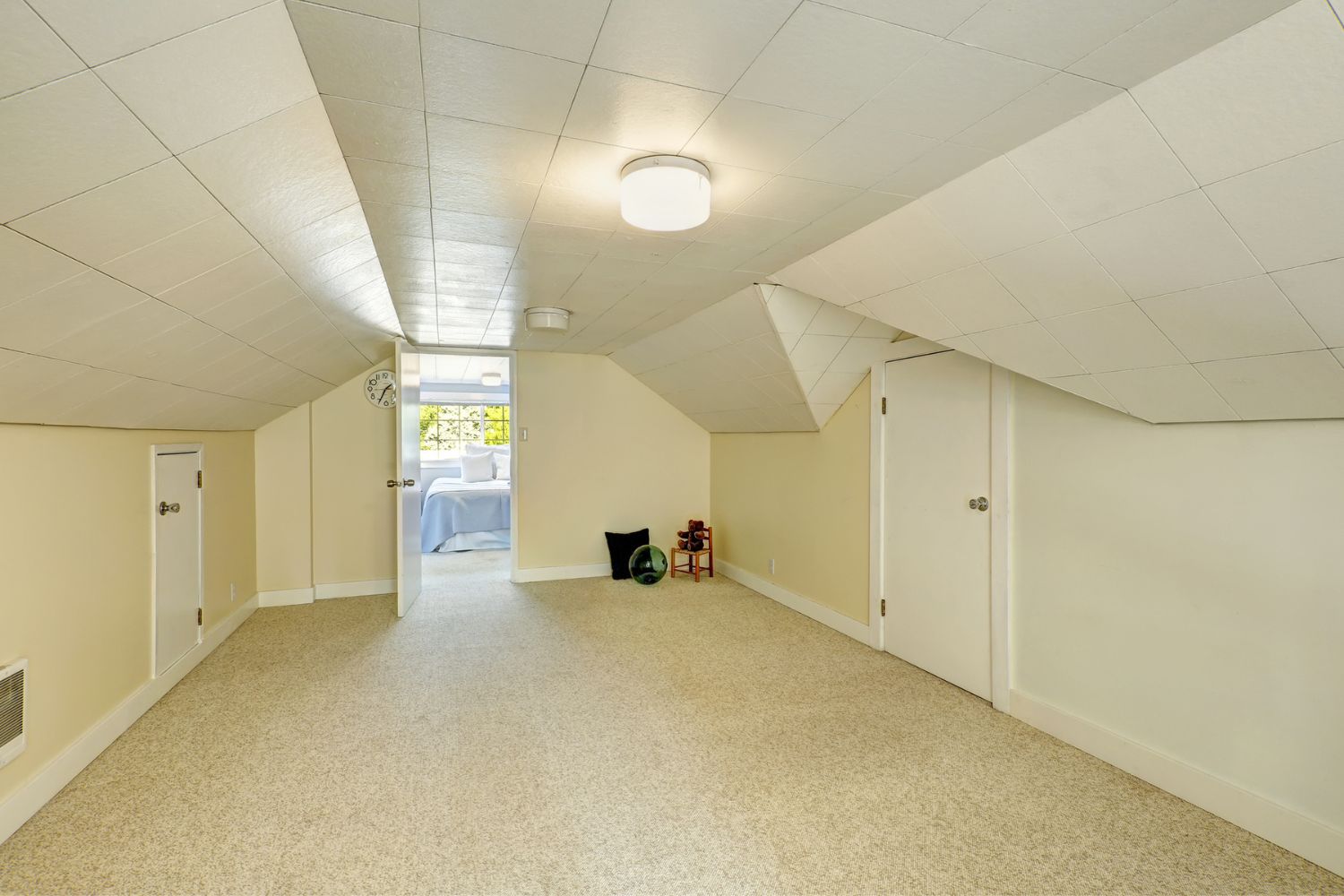
Types of Vaulted Ceilings
Vaulted ceilings come in a range of different types and styles, including barrel, cathedral, dome, groin vault, and rib vault. Each option has its appeal, so it’s important for a homeowner to weigh the benefits and drawbacks to determine the right vaulted ceiling type for their home. They’ll want to keep in mind that while aesthetics should not be the primary deciding factor for this upgrade, it’s still necessary to consider how the ceiling will look with the current decor and whether the style suits the personal tastes of the homeowner. Below are the average costs for different types of vaulted ceilings.
| Type of Vaulted Ceiling | Average Cost (Including Labor and Materials) |
| Barrel | $5,000 to $10,200 |
| Cathedral | $16,000 to $35,000 |
| Dome | $4,800 to $10,000 |
| Groin Vault | $4,800 to $10,000 |
| Rib Vault | $4,800 to $10,000 |
Barrel
A barrel vaulted ceiling is designed with a series of rounded arches overhead, similar to dome and groin vault ceilings. If the exposed arches don’t seem appealing, the structure can be drywalled to create a smooth, rounded arch that stretches the length of the room.
This project is minimally invasive to complete in an existing home, and it doesn’t require roof modifications. However, it is necessary to extend the roof into the attic space, so homeowners will want to be prepared to pay for an electrician and HVAC tech to modify the existing electrical and HVAC systems. Installing a barrel vaulted ceiling will cost about $5,000 to $10,200, making this design the second most costly option available.
Cathedral
One of the most popular types of vaulted ceiling is the cathedral ceiling, which, as its name suggests, has an angular design that mimics the shape of traditional cathedrals. Opting for a cathedral ceiling will help give the space a clean, simple look, but this style is typically the most expensive choice.
Homeowners interested in installing a cathedral vaulted ceiling will want to be prepared to spend about $16,000 to $35,000. This cost is due to the renovations that are required for the installation, including roof, HVAC, and electrical system modifications. At the bare minimum, the rafters will need to be moved to complete this job.
Dome
For smaller spaces, a dome vaulted ceiling is a great choice and can look good by serving as a focal point in the center of the room. This type of vaulted ceiling has a curved shape with a circular edge that can help complement the existing aesthetic or become a highlight of the home.
The design of a dome vaulted ceiling isn’t as complex as that of a cathedral ceiling, and it doesn’t require any serious roof modifications in most cases. Additionally, this style is shallower than a cathedral ceiling, so it doesn’t take up as much attic space. Homeowners can expect to spend about $4,800 to $10,000 for the installation of a dome vaulted ceiling.
Groin Vault
A groin vaulted ceiling goes by several names, including cross-vault and double-barrel vault. This is because a groin vault is created by crossing two barrel vaults. The end result of this design is essentially a double-overhead archway that extends throughout the room. Similar to barrel vaults, groin vaults do not reach as high as cathedral vault ceilings, so they don’t take up as much attic space. Additionally, a groin vaulted ceiling doesn’t typically require any roofing modifications, which helps to keep the cost low. Homeowners can expect to spend about $4,800 to $10,000 for a groin vault ceiling installation.
Rib Vault
Rib vaults and groin vaults are similar in design, but rib vault ceilings have a series of individual arched beams, rather than a double-overhead archway. However, the cost of this type of vault ceiling is about the same as the cost of a groin vault ceiling, with a price ranging from $4,800 to $10,000.
The reason for the relatively low price for this project is that rib vault ceilings don’t typically require any roof modifications, reducing the amount of labor necessary to complete the project. However, the ceiling will likely extend up into the attic, so an electrician and an HVAC tech may be needed to move the electrical and HVAC components.
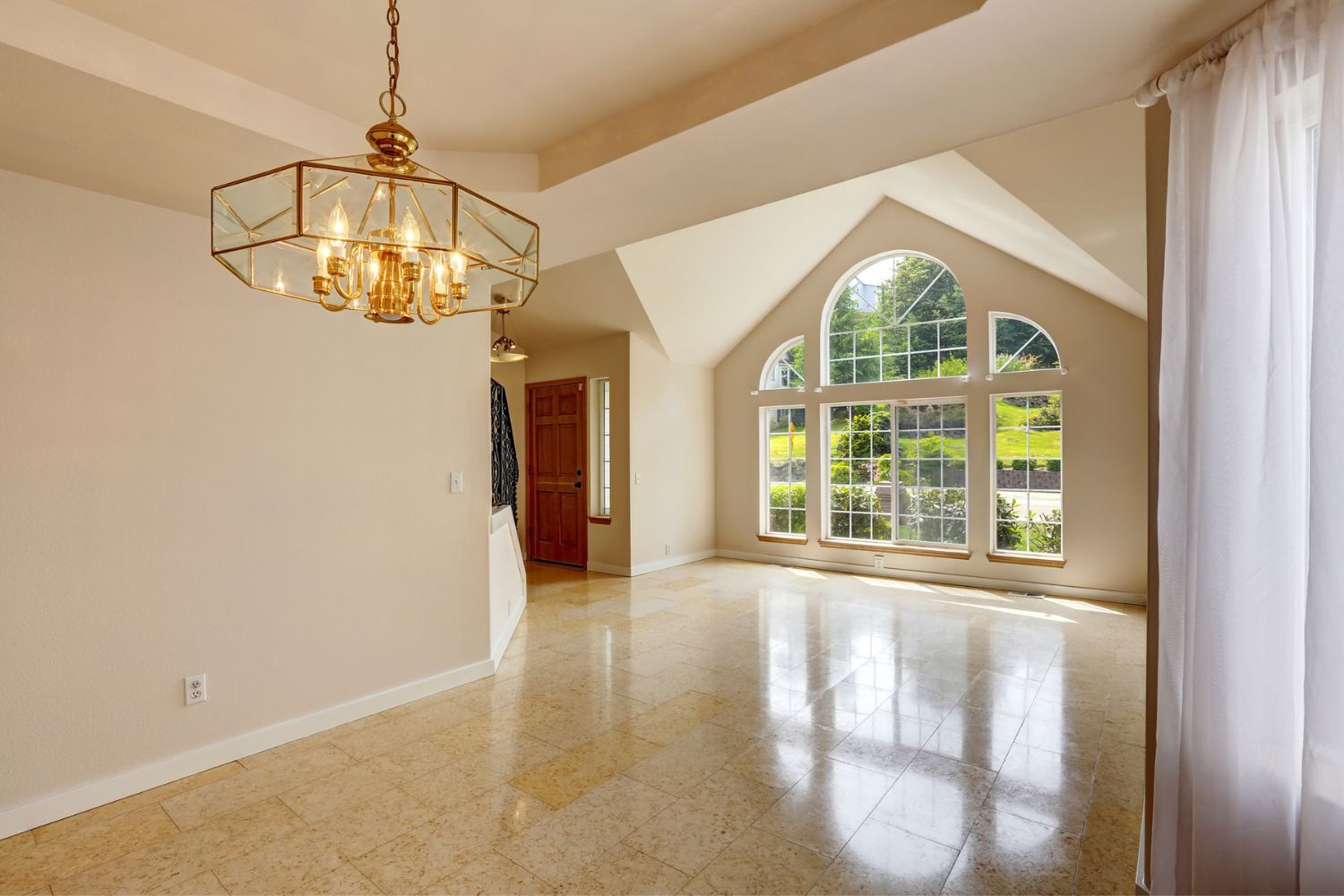
Benefits of a Vaulted Ceiling
Vaulted ceilings come with a range of benefits, including increased light, improved aesthetics, increased home value, and the appearance of more space. So whether the homeowner’s plan is to invest in a frame vaulted ceiling, vaulted ceiling with beams for a more exposed look, or a modern vaulted ceiling in a living room, there are benefits to every style.
Increased Light
If a homeowner is budgeting for popcorn ceiling removal cost, replacing it with a vaulted ceiling is an excellent way to increase the light in the room. The higher ceiling allows for more natural light to shine within the space, though this effect can be increased further by adding a glaze to the ceiling that reflects the light back down into the room.
During the installation of a vaulted ceiling, some homeowners will opt to fit the ceiling with skylights, so that the sun can shine in without obstruction, reducing the need for electrical lights during the day. Alternatively, the arched shape of the vaulted ceiling increases the square footage available for the installation of high-end lighting fixtures to further enhance the aesthetic appeal of the home.
Appearance of More Space
One of the best reasons for a homeowner to invest in a vaulted ceiling is that the extra ceiling height gives even compact rooms the appearance of more space. A standard ceiling is generally only about 8 to 10 feet in height, while the average vaulted ceiling can range from 12 to 25 feet, depending on the existing structure. For new buildings, homeowners will want to consider adding a vaulted ceiling in any areas that feel especially small to better enhance the full potential of the space. This renovation can make a cramped room feel more spacious and airy without increasing the actual square footage.
Better Aesthetics
Most people take pride in the appearance of their home and often select decor and opt for design choices that reflect their personal taste. A vaulted ceiling is another great way to enhance the existing aesthetic of the home, delivering elegant style and impressive architectural design.
Depending on the design, vaulted ceilings can complement a wide variety of styles, including modern, contemporary, mid-century, and farmhouse. The additional height of the room can make it feel as though there is more space, adding an element of grandeur that is perfect for common spaces, like the living room, dining room, or the entryway.
Increased Home Value
Many home renovation projects are designed to increase the value of the home by making it more attractive to potential buyers. While the actual home value depends on the local real estate market, installing a vaulted ceiling can be a good way to draw in interested buyers. With more than one buyer interested in a property, the selling price can increase rapidly in a short period of time.
Even before getting buyers involved, a vaulted ceiling may be able to increase the home’s value by up to 25 percent. However, in some markets, vaulted ceilings are an expectation, so adding them will not increase the value. If the goal of this project is to increase the property value, the homeowner will want to speak to a local real estate professional to determine if a vaulted ceiling installation will have the desired effect on the home’s value.
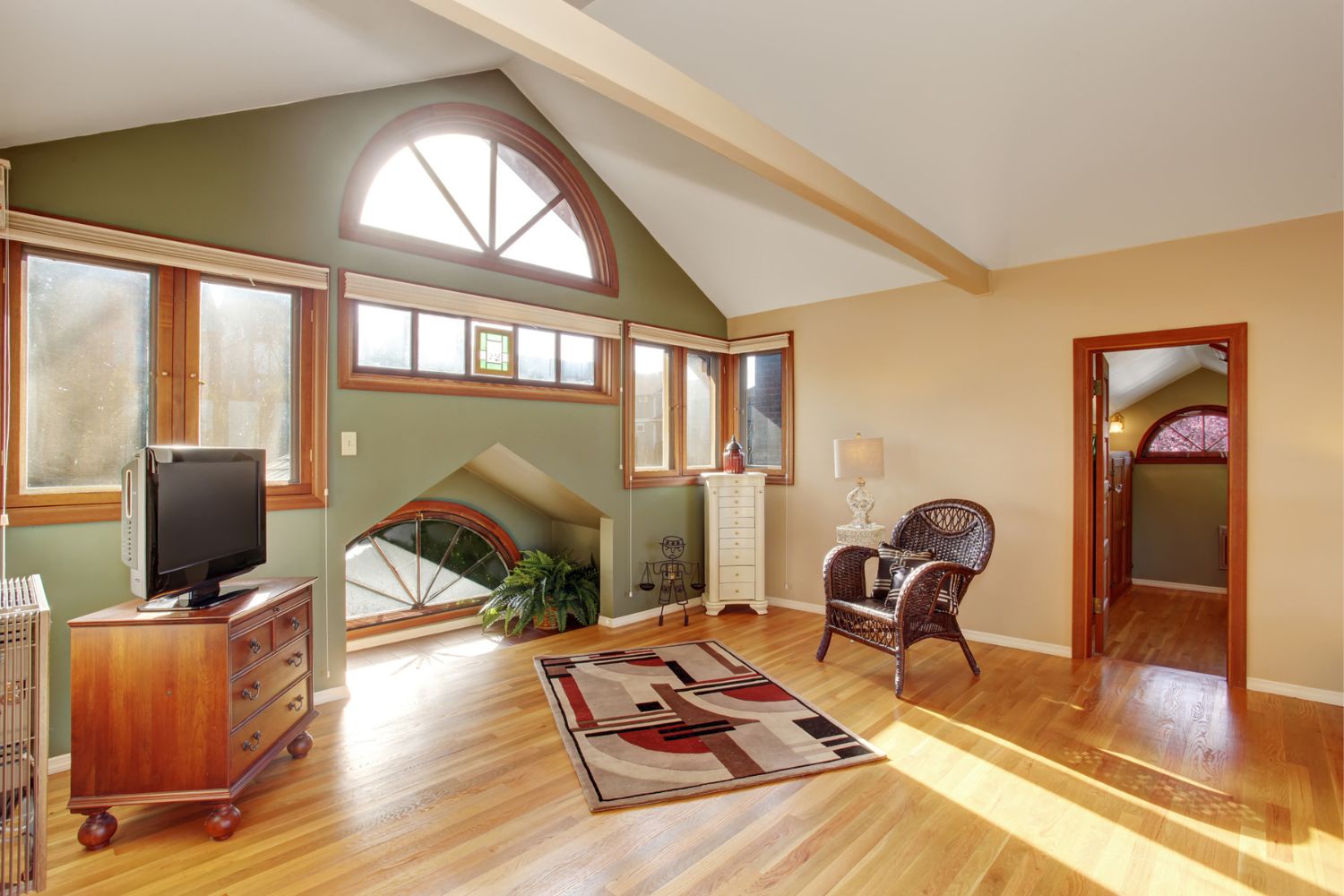
Vaulting a Ceiling: DIY vs. Hiring a Professional
Vaulting a ceiling is not a project intended for DIYers, though it’s understandable that it may be tempting for a homeowner to try to tackle this job, given that labor tends to account for up to 75 percent of the cost. This means that an experienced individual may be able to save between $13,500 and $26,250 on the cost of the project if they can handle the entire job without professional help.
However, a vaulted ceiling installation is significantly more complicated than the average DIY project. Even the best home renovation contractors will often hire structural engineers, architects, electricians, HVAC techs, plumbers, and laborers to help complete the work. Additionally, vaulting a ceiling is a project that will require a building permit, which may stipulate that a licensed and insured professional is necessary to complete the work. With this in mind, it’s recommended that homeowners leave this renovation work to the pros.
How to Save Money on the Cost to Vault a Ceiling
Investing in a vaulted ceiling is a great way to improve the aesthetics of the home, increase the light in the room, and give smaller rooms the appearance of more space. However, this project costs about $19,900 on average, so it’s often necessary to find ways to cut down on the costs without impacting the quality of the vaulted ceiling installation. These helpful methods will help you save money on the cost to vault a ceiling.
- Get multiple estimates. Before deciding on the right company or contractor for this job, make sure to research at least three potential choices and get multiple estimates to ensure that you are getting a fair price.
- DIY as much as possible. While vaulting a ceiling is not a DIY job, there are steps that you can take to reduce the amount of work the contractor must complete, such as preparing the site or moving furniture and appliances.
- Save this project for a new home. Turning a regular ceiling into a vaulted ceiling typically costs more than installing a vaulted ceiling during the initial construction of a home. If you are planning on building a new home in the near future, consider waiting for the new build to reduce costs.
- Bundle renovation projects. If there is more than one renovation project or any repairs that you want to complete, consider hiring the same company or contractor to take on these projects.
- Reduce monthly or yearly utility bills. Adding a vaulted ceiling will increase the cost to heat and cool the home, so it’s a good idea to look into ways to cut down on heating and cooling costs, like investing in a high-efficiency air conditioner, a hybrid heat-pump water heater, or even a zoned HVAC system.
Questions to Ask About Vaulting a Ceiling
The main reason to hire a contractor is that they have more knowledge, skills, and experience, allowing them to complete the work in a timely fashion and with a higher-quality outcome than the average DIYer. However, it’s still important for a homeowner to learn as much as possible about the company, contractor, workers, licensing, insurance, and project process. Before starting the project and while work is ongoing, homeowners are advised to ask the following questions about vaulting a ceiling.
- Do you have a contractor’s license?
- How long have you been in this business?
- May I see your certificate of insurance?
- Can you provide a list of past client referrals?
- Will you obtain the permits for the job?
- When can you start, and what is the projected timeline for completion?
- Will there be subcontractors working on this project?
- What is the payment schedule?
- How do I get in touch with you?
- Is there a warranty for the services and materials?
- How high will the ceiling be?
- What type of vaulted ceiling do you recommend?
- Will you have to remove the roof to vault the ceiling?
- Is any extra HVAC or electrical work required?
- How will you clean up at the end of the day?
- Where will tools and materials be stored?
- What steps will you take to protect my property?
- How will additional charges be handled?
- How will you resolve contractual disagreements?
FAQs
Installing a vaulted ceiling is a great way to add a touch of elegance to the home while increasing the home value and giving the room the appearance of more space. However, the cost to vault a ceiling can range from $4,800 to $38,000, so it’s important that a homeowner have as much information about this project before starting. Homeowners can find out more about vaulted ceiling installations with the answers to some of the most frequently asked questions below.
Q. Can I turn a regular ceiling into a vaulted ceiling?
A regular ceiling can be turned into a vaulted ceiling if the home has unused attic space and there aren’t any problems with the current infrastructure layout, such as the position of the chimney, plumbing lines, or HVAC lines. Due to the potential complications involved with turning a regular ceiling into a vaulted ceiling, it’s typically less complicated and potentially less expensive to install a vaulted ceiling at the initial point of construction.
Q. How long does it take to vault a ceiling?
Vaulting a ceiling generally takes about a month from demolition to the addition of the final touches, though it depends on the design. Extras, like exposed vaulted ceiling trusses, or complications, like the rerouting of HVAC ducts, can increase the timeline.
Q. Do I have to remove a roof to vault a ceiling?
The roof doesn’t necessarily need to be removed, though it depends on the home. If the framework in the attic is made up of a series of 2x4s and perforated metal plates, then the roof is framed with trusses. This means a contractor will need to remove the entire roof structure to vault the ceiling. However, if the roof has been framed traditionally with lumber rafters, the roof does not need to be removed.
Q. Does vaulting a ceiling add value to a home?
Depending on the local real estate market, a vaulted ceiling could add up to 25 percent to a home’s value. However, vaulting a ceiling will not automatically add value to the home, so before taking on this project it’s recommended that homeowners find out if the investment will be worth it in their area.
Q. Do vaulted ceilings increase electric bills?
Installing a vaulted ceiling will increase the electric bills in the same way that adding a small extension onto the home will. This is because vaulted ceilings create more cubic feet of space for the HVAC system to heat or cool.
Q. How high is a typical vaulted ceiling?
The typical height of a vaulted ceiling can range significantly depending on the home. While a standard ceiling height is generally just 8 to 10 feet, a vaulted ceiling can measure around 12 to 25 feet in height. The increase in height means homeowners will likely pay a higher ceiling repair cost for a vaulted ceiling than from a traditional ceiling.
Sources: Angi, HomeAdvisor, HouseLogic


